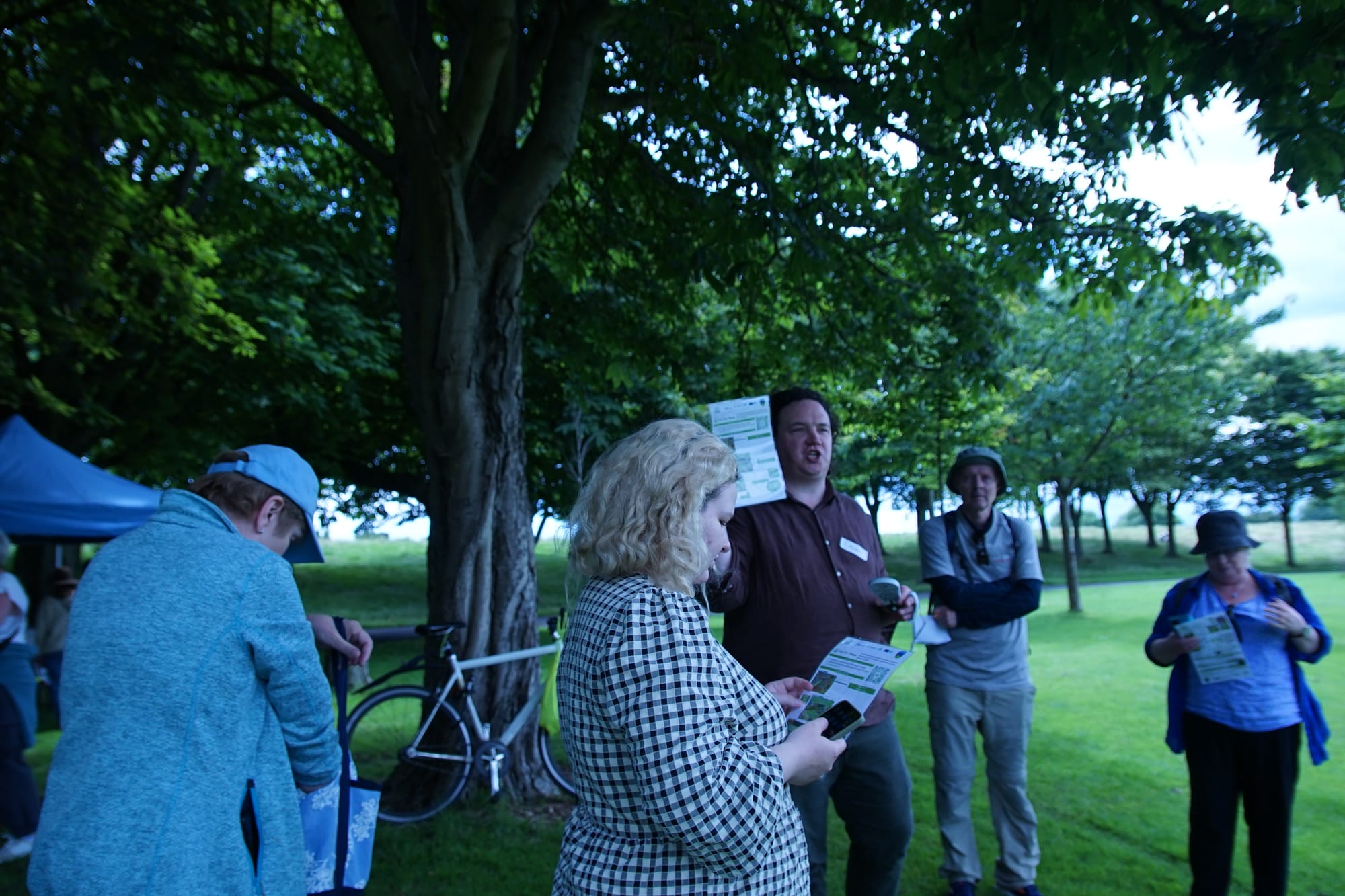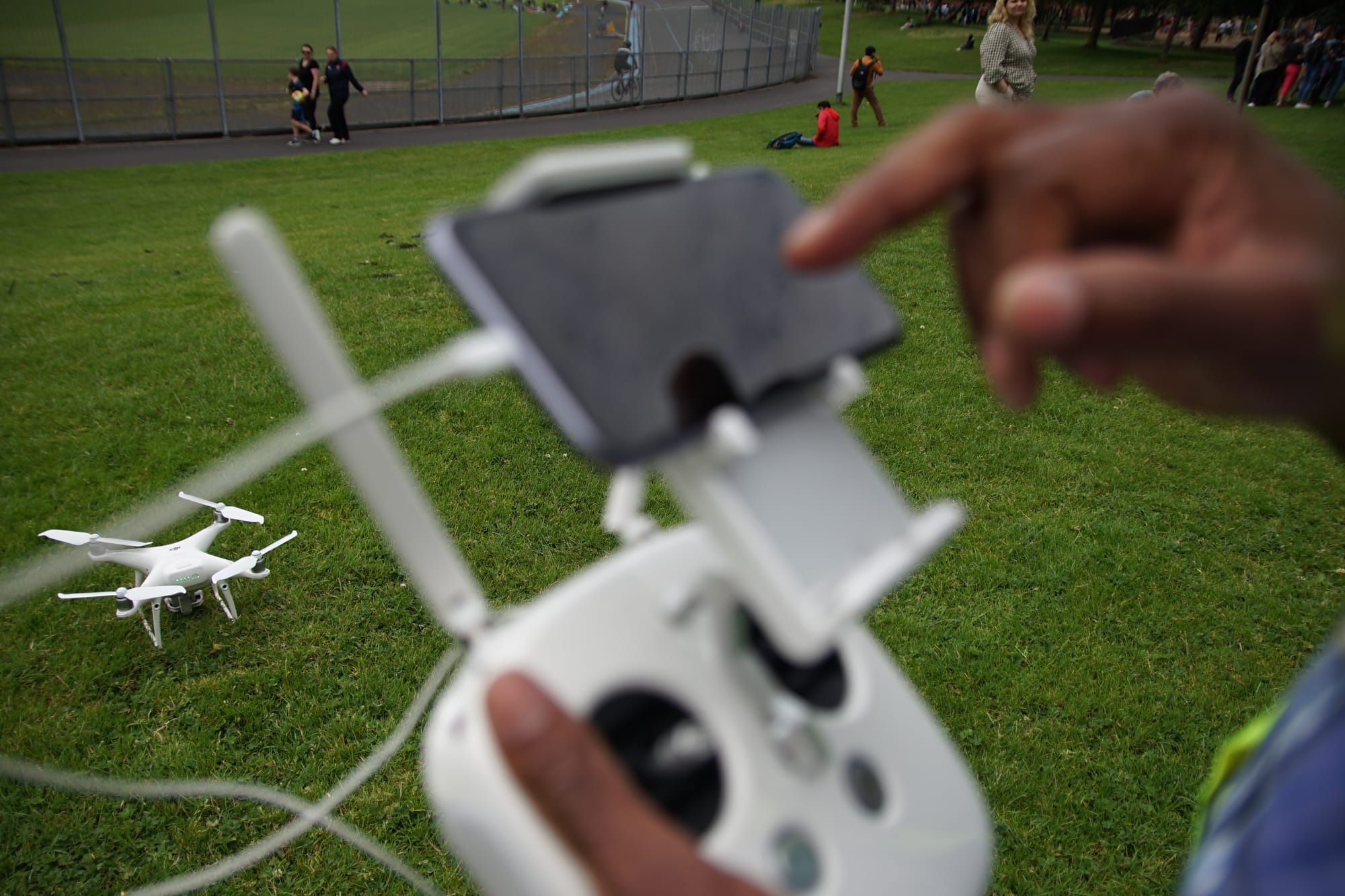What’s the best way to tell area residents about plans for a new asylum shelter nearby?
The government should tell communities directly about plans for new asylum shelters, some activists and politicians say.
To figure out how much carbon the trees sequester, oxygen they release, stormwater they can soak up – and more.

Researchers know there are 9,099 trees in Crumlin, says Dominic Robinson, a senior research scientist at UCD School of Geography.
But there are key finer details about trees in the neighbourhood that he, his fellow researchers, and Crumlin locals, don’t know.
That’s why around 11am on 13 July, about 80 people had gathered at Clogher Road Community College to talk about mapping them.
Researchers at UCD working on the INTERVAL project are looking into uneven tree distribution across the city.
By making a more detailed tree inventory than currently exists, they hope to identify specific areas where improvements can be made, says Adwoa Serwaa Ofori, a UCD researcher and team member of the project.
Engaging with communities will help them to understand how many trees they have around them, where more could be added, and how they benefit a wider ecosystem, she says.
There are about 300,000 trees in Dublin, but only 100,000 public trees, says Srikanta Sannigrahi, the team leader, during the meeting.
And studies show that the distribution of trees in Dublin is quite uneven.
Ballsbridge and Rathmines boast high tree-density, for example. In some other areas, the tree density is quite low, he says.
The Dublin Tree map – put together by UCD and the council – shows the density of trees in the very centre of the city is “very low”, in Crumlin it’s “low”, in Fairview it’s “high”, and in Donnybrook it’s “very high”.

Crumlin is a good place to run the pilot, says Robinson. Locals are “extremely active, extremely interested in their environment and they do a lot for their community”.
They also want to be involved in making decisions around what happens in their neighbourhood, he said.
Hugh Cardiff – who has lived in Crumlin for 20 years and volunteered planting trees with Bloomin’ Crumlin for about two years – said that trees add so much to the area. “Crumlin needs more trees and greenery and biodiversity.”
More trees, and an awareness of them, are so important, says local Miren-Maialen McDonald. “It is important for quality of life.”
McDonald was one of the many residents interviewed earlier in the project, so researchers could understand their views on urban tree management and information dissemination, said Sannigrahi.
The conversations with community members, public bodies, environmental NGOs, and a bunch of others, were essential for understanding the community’s diverse needs and preferences, he says.
At the moment, the researchers are mostly teaming up with Bloomin’ Crumlin for the project. But they’ve also reached out to sports clubs, schools, senior and youth groups, the Scouts, and religious groups, said Sannigrahi.
The project aims to create a map of Crumlin, with spots for all the trees – public and private – which people can click on to learn about their environmental benefits, said Trevor Clowry, coordinator of Bloomin’ Crumlin.
Like a Google map, he says. “But with all the trees and all the information, all the photos, you will be able to filter by categories.” And it should help the community spot where more green infrastructure is needed too.
Later, participants headed to Eamonn Ceannt Park.
In the park, the group divides up. Some learn more about the varieties of trees, others learn to master the PlantNet app that helps to identify plants with pictures.
Tine Ningal, part of the UCD research team, sets up the drone. He programmes in the mission, until, bzzzz – it takes flight.
“You see the blue and black dots here, these are photos taken,” says Ningal, showing the drone mission on his phone.

The 2017 Dublin Tree Canopy Study pointed out low tree cover areas between the canals in the city centre, and an area with low tree cover running from the Grand Canal to the city’s southwest border.
The council’s development plan sets a goal of increasing tree canopy cover to a minimum of 10 percent in all areas, focused on those with a deficit.
Also, “The City Tree Strategy is under review and will be re-published early 2025,” a council spokesperson said last week.
The last tree strategy ran from 2016 to 2020. “The policies and objectives are still relevant,” the spokesperson said.
“Since 2017, the council has been rolling out greening plans in neighbourhoods within the canals to tackle the shortfall in tree canopy cover, said the spokesperson.
Those plans have covered the Liberties, the north-east inner city, and Stoneybatter, said the spokesperson. “Greening interventions are now extending to other parts of the city.”
Councils do hold basic metrics for trees, says UCD researcher and a physical geographer Gerald Mills. They know locations to some extent, health, size, he said.
But that doesn’t fully capture the environmental benefits from the trees, Mills said. The project aims to fill in some of that detail, he says.
Data that can be used to calculate how much carbon the trees sequester, the oxygen they release, the stormwater they can soak up – and how they filter pollutants from the air, and moderate hot weather.
The detailed data collected through the Crumlin pilot will be searchable for all online in an easy way, says Sannigrahi.
Their project receives funding from Science Foundation Ireland, says Jeremy Auerbach, an assistant professor at UCD and the team member of the project.
The next step is for Clowry, of Bloomin’ Crumlin, to assign community leaders to different areas, with each team responsible for surveying about 1,000 trees, said Robinson, of UCD.
UCD will collect the data, start to identify gaps in “green infrastructure”, and come back and tell the community what they found, says Robinson.
“We won’t define the solutions,” he said. They’ll bring in experts to help the community choose solutions that they want to push, he says.
As the orientation wound up at Eamonn Ceannt Park on 13 July, some team members huddled for a group photo. “Trees!” they called out
Get our latest headlines in one of them, and recommendations for things to do in Dublin in the other.